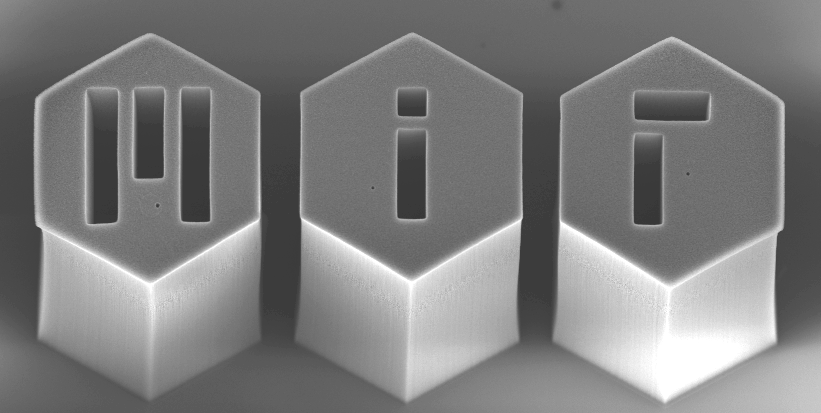M. De Volder, D.O. Vidaud, E.R. Meshot, S. Tawfick, A.J. Hart. Microelectronic Engineering 87(5-8):1233-1238, 2010. [http://dx.doi.org/10.1016/j.mee.2009.11.139]
[PDF]
It is well-known that carbon nanotube (CNT) growth from a dense arrangement of catalyst nanoparticles creates a vertically aligned CNT forest. CNT forests offer attractive anisotropic mechanical, thermal, and electrical properties, and their anisotropic structure is enabled by the self-organization of a large number of CNTs. This process is governed by individual CNT diameter, spacing, and the CNT-to-CNT interaction. However, little information is known about the self-organization of CNTs within a forest. Insight into the self-organization is, however, essential for tailoring the properties of the CNT forests for applications such as electrical interconnects, thermal interfaces, dry adhesives and energy storage. We demonstrate that arrays of CNT micropillars having micron-scale diameters organize in a similar manner as individual CNTs within a forest. For example, as previously demonstrated for individual CNTs within a forest, entanglement of small-diameter CNT micropillars during the initial stage of growth creates a film of entwined pillars. This layer enables coordinated subsequent growth of the pillars in the vertical direction, in a case where isolated pillars would not grow in a self-supporting fashion. Finally, we provide a detailed overview of the self-organization as a function of the diameter, length and spacing of the CNT pillars. This study, which is applicable to many one-dimensional nanostructured films, demonstrates guidelines for tailoring the self-organization which can enable control of the collective mechanical, electrical and interfacial properties of the films.
Disclaimer: The PDF document on this webpage is provided for educational and personal purposes alone and is subject to copyrights of the publisher.

